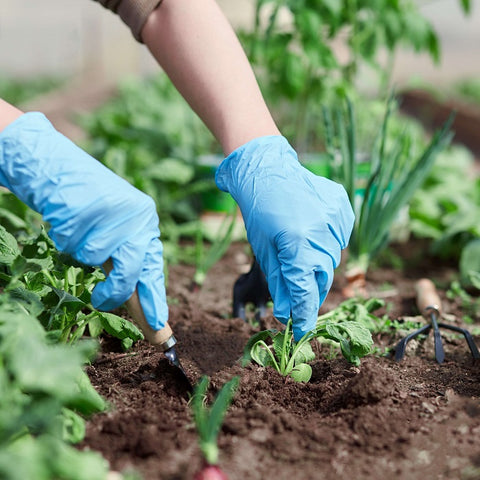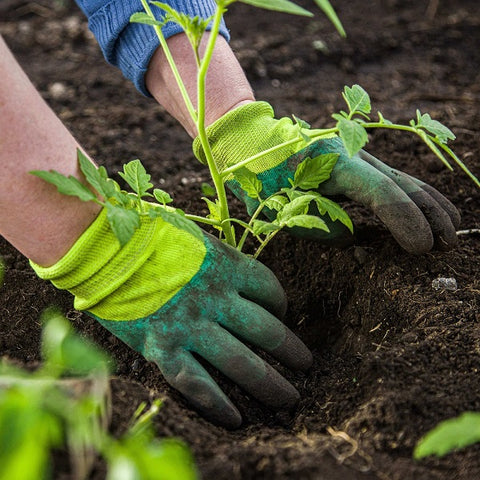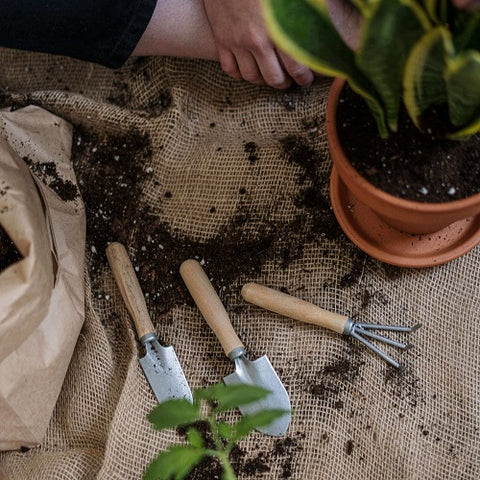Is your garden always flooded or dry? Here's what you need to know to improve soil drainage.In reading descriptions of garden plants, you've probably noticed that most varieties grow best in well-drained soil, but what does that really mean? How do you know if your soil drains well? You want soil that provides air and water to plants in roughly equal proportions. If your soil is rough and sandy, you may notice that water drains from the soil quickly, so your plants dry out and wilt quickly. But you can have the opposite problem in heavy clay soils, where the water takes a long time to drain, causing roots to rot from lack of air. If your garden soil is affected by either extreme, improving its drainage will go a long way toward creating a healthy, thriving garden.The following content also has some reference value for raised garden beds.

Well-drained soil features
The Spaces between the solid particles of any soil are filled with oxygen and water, both of which are necessary for healthy plant growth. When it rains or irrigates the garden, these pore Spaces fill with water. As water moves down through the soil, it is replaced by air. This movement is called soil drainage, and the speed at which it occurs is important.
It's easy to determine how well your soil drains. Just dig a hole 12-18 inches wide and 12-18 inches deep (no need to be precise). Next, fill the hole with water. After it is completely drained, refill with water and note how long it takes for the water level to drop. In well-drained soil, the water level should drop about an inch every hour. Any slower or faster than this can cause problems, but there are several ways to improve soil drainage.
How can you tell if the soil is well drained?
1. Observe the rate of water penetration: Pour a certain amount of water into the soil slowly and observe the rate of water penetration. If water permeates and disperses quickly, the soil is well drained. If water permeates slowly and accumulates on the surface, the soil is poorly drained.
2.Look at soil color: Well-drained soil tends to be darker because water quickly seeps into deeper subsurface layers; Poorly drained soil is usually lighter in color because water accumulates on the surface.
3.Measuring soil water content with a water meter: Insert a water meter into the soil and observe the meter reading. If the reading is high, the soil water content is high and drainage may be poor; If the reading is low, it indicates that the soil has low water content and may drain well.
4.Judging plant growth condition: if the plant grows healthily and leaves are green, it indicates that the soil drains well; If the plant is not growing well and the leaves are yellow and wilt, it indicates poor soil drainage.
5.Observe the soil structure: Good soil drainage is characterized by porosity and permeability. If the structure in the soil is tight, without porosity and ventilation, the soil drainage is poor.

How to cultivate well-drained soil
Digging up organic matter (such as compost or shredded leaves) in existing soil is one of the best ways to improve soil drainage. This simple method works for almost any soil that drains too quickly or too slowly. For unplanted soil, spread 3 to 4 inches of organic matter over the surface of the soil and fertilize the top 8 to 12 inches of the soil (a garden tiller or pitchfork will also work). For an already planted soil, add a few inches of compost to the surface of the soil each year, which will naturally mix over time.
If you want to avoid a lot of digging, or want a faster solution, then a high bed is the answer. Seedbeds should be 6 to 8 inches above existing soil levels. You can buy or build raised beds out of different materials and adjust the size to suit your needs. There are many mixed soil recipes for growing beds, but they are basically a combination of good quality topsoil (40-60%) and compost or other well decomposed organic material.
Cultivating well-drained soil in a pot is similar. You can buy potting mix in bags or make your own mix. It's best not to use soil from your garden in containers, no matter how well it drains. It tends to be too heavy and can contain weed seeds and pets that can cause problems later on.
Deal with drainage differences
It is important to note that soil drainage may vary in different parts of your yard. This may be due to removal of topsoil during construction, compaction with heavy equipment, or simply the layout of the land. If there is an area of the yard where the soil remains wet for an extended period of time, the best solution may be to choose plants that grow in poorly drained, moist soil. Similarly, if you have an area of your yard that is dry, no matter how much rain or water it gets, you should plant drought-tolerant plants there.

If certain areas of your yard have poor drainage, you may need to install a drainage shingle (pipe buried in the ground to move water away from the problem area). This involves digging a trench about 18 inches deep with gravel at the bottom and installing a perforated pipe to carry excess water to areas outside the garden. Before covering pipes and ditches with dirt, pipes should be covered with gravel to prevent soil clogging.









